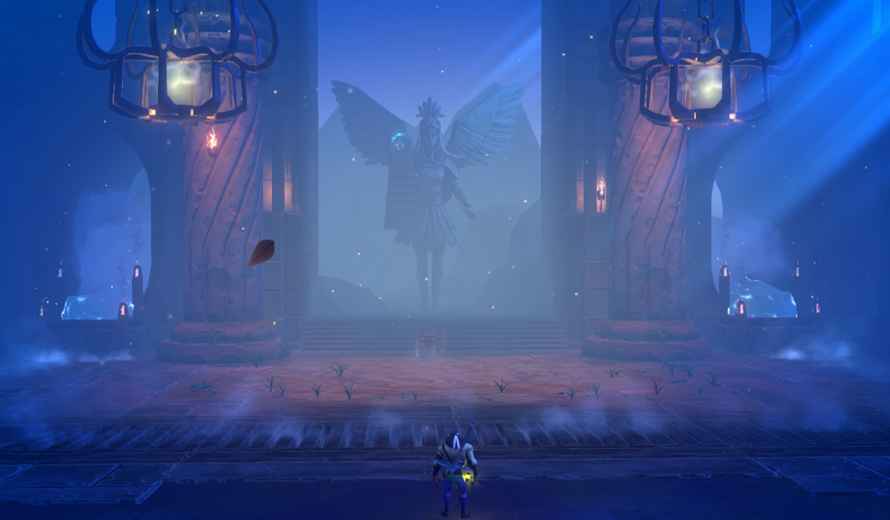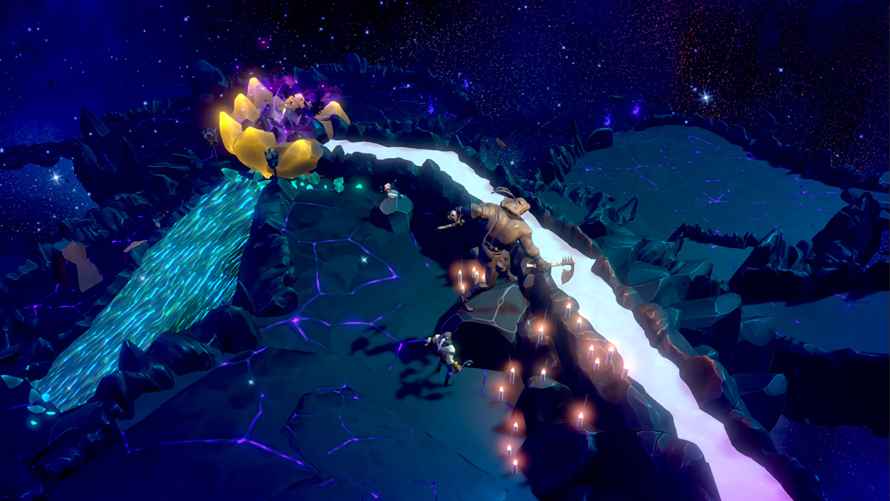Interview with composer Hamidreza Ansari
Listen to a “typical” videogame score (whatever that is) and you’ll most often hear music rooted in the European classical music tradition. Of course, it’s filtered through decades of film composers and pop music. Less common are video game soundtracks that reflect world music traditions. There are a few. Cody Matthew Johnson’s score for Trek to Yomi only uses authentic Japanese instruments and textures, for example. Outside of Prince of Persia’s Persian-influenced rock, Iranian music doesn’t appear in many games. That’s one of the reasons that Hamidreza Ansari’s music for The Tale of Bistun caught my attention. I had the chance to talk to Hamidreza Ansari via email about his score. In case you missed it, The Tale of Bistun is a third-person action game based on a beloved Persian myth and epic poem.
A Meeting of Musical Styles
Unlike western music, which is largely based on a 12-note chromatic scale, Persian music uses microtones, or intervals smaller than the usual half-steps. Hamidreza said that “Scales that are used in traditional Persian music are different from classical western scales. These scales contain symbols that ascend or descend a note by a quarter-step pitch, rather than the usual western half step. That’s one of the key aspects that makes traditional sound different to non-Iranian listener.”
The music does a great job of blending Iranian and western music traditions. “I was coming up with a main theme on the piano for the whole story of the game, I used a bit touch of classical harmony to have an old classical love style emotion. The melody used a borrowed technique called ‘shahed.’ It’s basically focusing on scale’s most important notes. I knew I didn’t want to base the harmony and structure of The Tale of Bistun’s score on Persian music harmony. I used Persian/non-Persian instrumentation to represent various characters and add flavors.”

Lengthy Development
Hamidreza Ansari started thinking about the score for The Tale of Bistun in 2017, during the production of Children of Morta. “Two of my friends at Black Cube game studio showed me a video of an early sample of in-level progression. The visuals and the atmosphere immediately caught me. I did some sketches some hours later based on the feeling I had at the time, and showed it to the guys. They liked my approach of combining Persian instrumentation with orchestra, and asked me to do the game’s music.”
Every composer has a different approach to finding the sound for a project. “First, I come up with a main theme to describe the core feeling that I want, like a big picture. Then I try to visualize the music and its dynamics on a chart, as the player progresses through the game’s up and down in story. Then I come up with my palette of sounds by answering lots of questions.”

Hamidreza said that “I didn’t use any specific Persian scale or any specific rhythmic in Persian music repertoire.” There are, however, many Persian instruments in the score. “I used one of my favorites, “Setar” which represents Farhad. It is a guitar-like stringed instrument with lots of exciting, poetic sounds.” Wind instruments included the Ney and Duduk. There were popular Persian percussion and string instruments used as well.
Sampling Success
Game and film music are usually a combination of live players and digital samples. In the case of The Tale of Bistun, all the sounds are sampled. The composer wrote hours of music but “45 minutes up to an hour” made its way into the final game.
Every score and project presents challenges for the composer. Hamidreza said that one challenge was “coming up with a combination of instruments and balancing the whole narrative side with cues accordingly. Assigning characters to instruments and composing music based on them. Another part was implementing adaptive music to sync the game’s music based on the player’s action, adding to that I also wanted to have key changes in order to darken or brighten the scene, like after a fight. So it became challenging sometimes picking the right chords and melodies for transitions.”

I asked Hamidreza to highlight his favorite cues from the score. He said that “Aside from the main theme of the game. “Greatest Mistake” is one of my favorites. It is played in the prologue and I liked the way the music got tight with (narrator) Shohre Aghdashloo’s deep and charismatic voice.” “Until We Meet Again” is played in the seventh chapter of the game with instruments Setar, Kuze and flute being combined in conversational way between Farhad and Khosrow, trying to get to a temporary peace.”
A Tale of Influences
Most composers are happy to talk about their influences and favorite composers, and Hamidreza Ansari is no exception. “I learned a lot listening to classical music and studying many composers, but my biggest three influences are Beethoven, Gustav Holst, and the infamous Igor Stravinsky. In the gaming area my most influences are Russell Brower, Jeremy Soule and Jesper Kyd.” He added that “my music is inspired by Ennio Morricone, Joe Hisaishi and Hans Zimmer as I respect their specific taste and approach to scoring.”
The Tale of Bistun is a unique, colorful and engaging game. It’s based on interesting source material and made especially effective by Hamidreza Ansari’s moving, exciting and colorful music. The game is available now on PC and Xbox.
Special thanks to Hamidzera Ansari. Answers edited for length.